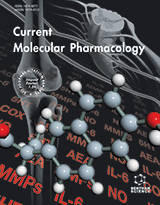Abstract
The mevalonate pathway synthesizes intermediates and products such as cholesterol and nonsterol isoprenoids that are crucial for cell survival and function. In the human placenta, the prenylation of proteins, rather than cholesterol synthesis, represents the main "metabolic target" of mevalonate metabolism. Major cellular functions depend on isoprenylation including proliferation, migration, metabolism and protein glycosylation that are all crucial for proper development of the embryo and the placenta. Statins are inhibitors of HMG-CoA reductase, the enzyme that catalyzes the reduction of HMG-CoA to mevalonic acid by NADPH. In vitro experiments using human placental explants suggest that statins elicit a detrimental effect on placental growth. However, animal and epidemiologic studies show no increase of fetal malformations after exposure to statins during pregnancy. Moreover, emerging evidence from mouse studies suggest that statins may be useful in preventing serious pregnancy complications like preeclampsia.
Keywords: Animal studies, mevalonate pathway, placental development, preeclampsia, pregnancy, statins.
Graphical Abstract
Current Molecular Pharmacology
Title:Statins, Mevalonate Pathway and its Intermediate Products in Placental Development and Preeclampsia
Volume: 10
Author(s): Leonardo Ermini, Martin Post and Isabella Caniggia
Affiliation:
Keywords: Animal studies, mevalonate pathway, placental development, preeclampsia, pregnancy, statins.
Abstract: The mevalonate pathway synthesizes intermediates and products such as cholesterol and nonsterol isoprenoids that are crucial for cell survival and function. In the human placenta, the prenylation of proteins, rather than cholesterol synthesis, represents the main "metabolic target" of mevalonate metabolism. Major cellular functions depend on isoprenylation including proliferation, migration, metabolism and protein glycosylation that are all crucial for proper development of the embryo and the placenta. Statins are inhibitors of HMG-CoA reductase, the enzyme that catalyzes the reduction of HMG-CoA to mevalonic acid by NADPH. In vitro experiments using human placental explants suggest that statins elicit a detrimental effect on placental growth. However, animal and epidemiologic studies show no increase of fetal malformations after exposure to statins during pregnancy. Moreover, emerging evidence from mouse studies suggest that statins may be useful in preventing serious pregnancy complications like preeclampsia.
Export Options
About this article
Cite this article as:
Ermini Leonardo, Post Martin and Caniggia Isabella, Statins, Mevalonate Pathway and its Intermediate Products in Placental Development and Preeclampsia, Current Molecular Pharmacology 2017; 10 (2) . https://dx.doi.org/10.2174/1874467209666160112123457
| DOI https://dx.doi.org/10.2174/1874467209666160112123457 |
Print ISSN 1874-4672 |
| Publisher Name Bentham Science Publisher |
Online ISSN 1874-4702 |
 51
51 5
5
- Author Guidelines
- Bentham Author Support Services (BASS)
- Graphical Abstracts
- Fabricating and Stating False Information
- Research Misconduct
- Post Publication Discussions and Corrections
- Publishing Ethics and Rectitude
- Increase Visibility of Your Article
- Archiving Policies
- Peer Review Workflow
- Order Your Article Before Print
- Promote Your Article
- Manuscript Transfer Facility
- Editorial Policies
- Allegations from Whistleblowers
- Announcements
Related Articles
-
Altered Calcium Handling in Reperfusion Injury
Medicinal Chemistry Nitric Oxide and the Regulation of Apoptosis in Tumour Cells
Current Pharmaceutical Design Biochemical, Hematological and Histopathological Indices of Wistar Rats Fed Vitamin and Mineral Deficient Diets Supplemented with Moringa oleifera Leaf Meal
Current Nutrition & Food Science Circulating Levels of Uric Acid and Risk for Metabolic Syndrome
Current Diabetes Reviews Bone Marrow Cell Therapy in Clinical Trials: A Review of the Literature
Reviews on Recent Clinical Trials Homocysteine in Neurology: From Endothelium to Neurodegeneration
Current Nutrition & Food Science Mediterranean Diet and Dementia of the Alzheimer Type
Current Aging Science The LDL-Receptor and its Molecular Properties: From Theory to Novel Biochemical and Pharmacological Approaches in Reducing LDL-cholesterol
Current Medicinal Chemistry Leptin and Vascular Smooth Muscle Cells
Current Pharmaceutical Design Preventive and Therapeutic Role of Muscle Contraction Against Chronic Diseases
Current Pharmaceutical Design Recent Advancement in the Treatment of Cardiovascular Diseases: Conventional Therapy to Nanotechnology
Current Pharmaceutical Design Correlation between Serum 25 hydroxy vitamin D level and plasminogen activator inhibitor 1 in type 2 diabetic patients
Endocrine, Metabolic & Immune Disorders - Drug Targets Efficacy and Safety of Evacetrapib for Modifying Plasma Lipids: A Systematic Review and Meta-Analysis of Randomized Controlled Trials
Current Pharmaceutical Design The Role of Inflammatory Biomarkers in the Detection and Therapy of Atherosclerotic Disease
Current Vascular Pharmacology Neuro-psychopharmacogenetics and Neurological Antecedents of Posttraumatic Stress Disorder: Unlocking the Mysteries of Resilience and Vulnerability
Current Neuropharmacology Gene Modified Cell Transplantation for Vascular Regeneration
Current Gene Therapy Diabetic CVD – Focus on Vitamin D
Cardiovascular & Hematological Agents in Medicinal Chemistry Acute Physical Stress Increases Serum Levels of Specific microRNAs
MicroRNA PDE5 Inhibitors in Non-Urological Conditions
Current Pharmaceutical Design Cardiovascular Drug Development Using Radiopharmaceuticals
Current Pharmaceutical Design


























